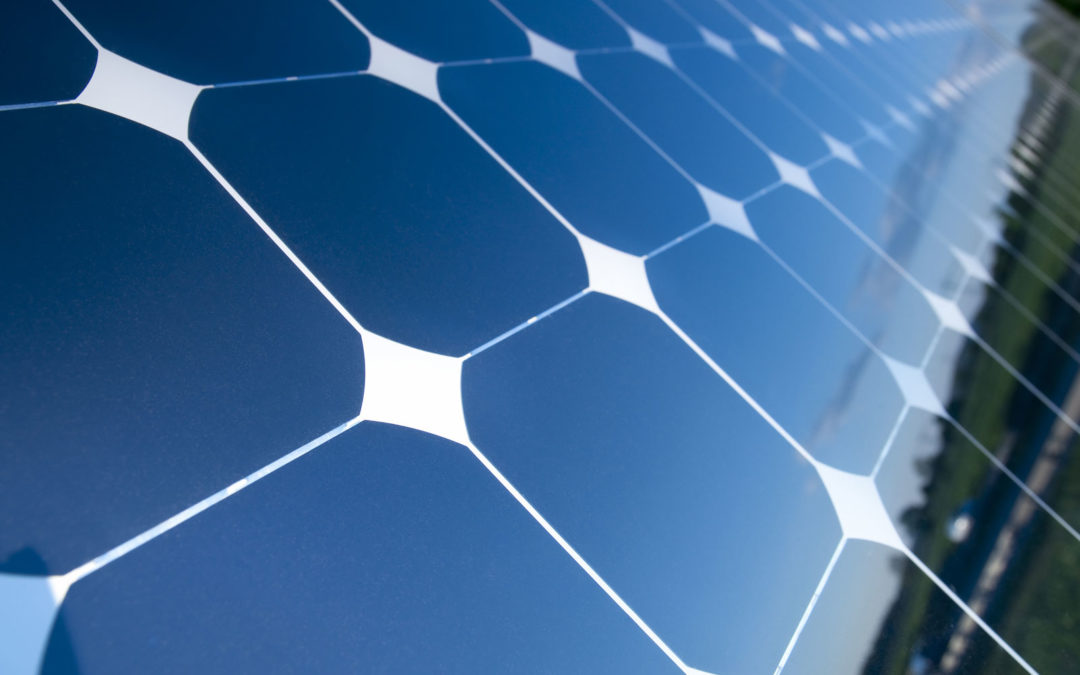
by Tyler Huebner | Jan 30, 2020 | Local Government, Public Service Commission, Solar, Utilities, Utility Scale
Today, the Public Service Commission of Wisconsin approved another solar farm: the Badger State Solar Farm to be located in Jefferson County, Wisconsin.
Badger State will be a 149-megawatt solar farm, and will supply electricity to Dairyland Power Cooperative. Dairyland is a wholesale energy provider for 24 rural electric cooperatives, 18 of which are located in Wisconsin. Dairyland also provides energy to an additional seventeen municipal electric utilities, ten of which are in Wisconsin.
The solar project’s developer is Ranger Power, one of RENEW Wisconsin’s Business Members.
This project marks the fourth solar farm approved by the Wisconsin PSC in the past 9 months, and the solar projects approved now total 699 megawatts. Badger State should be operational by 2021.
The project is expected to generate enough renewable energy to power over 20,000 homes, according to a Dairyland Power news release from March 2019, when their power purchase agreement was announced.
The project was given a unanimous verbal approval today, and a final order will follow in the next few weeks. This was the final decision made by retiring Commissioner Mike Huebsch, who announced his retirement earlier this month.
RENEW Wisconsin’s Executive Director Tyler Huebner said, “The Badger State Solar will continue Wisconsin’s steady march towards a clean, renewable energy future, and will help Dairyland Power Cooperative meet its goals to increase the sustainability and diversity of its power generation sources. Congratulations to Ranger Power and Dairyland Power Cooperative on this project approval!”
Statistics about the Badger State Solar Farm
- 149 megawatts
- Expected to produce enough electricity for about 20,000 Dairyland Power Cooperative customers each year
- Electricity Production will be about 0.4% of Wisconsin’s total 2018 electricity sales, and about 8% of Dairyland Power’s 2018 Wisconsin retail sales.
- Located on approximately 1,200 acres which is 0.5% of Jefferson County’s farmland
- The project developer expects to utilize pollinator-friendly plants under the solar panels that will help rejuvenate the soil underneath the array.
- Under Wisconsin’s energy generation shared revenue law and renewable energy incentive payment laws, the local governments where the arrays are located will receive a substantial economic boost: Jefferson County will receive approximately $348,000 annually, the Town of Jefferson $125,000 annually, and the Town of Oakland $123,000 annually.
Statistics about the 4 solar farms approved by the PSC
Badger Hollow Solar (Iowa County), Two Creeks Solar (Manitowoc & Kewaunee Counties), Point Beach Solar (Manitowoc County), and now Badger State Solar (Jefferson County) received PSC approvals between April 2019 and January 2020.
- Total of 699 megawatts of solar power production
- Expected to produce enough power for about 178,000 average Wisconsin homes’ annual energy consumption
- This amount of electricity produced would be about 2.0% of Wisconsin’s total 2018 electricity sales
- These four projects will be located on approximately 5,300 acres of land, about 0.05% of Wisconsin’s farmland. In total Wisconsin has approximately 34,700,000 acres of land.
- The hosting local governments (townships and counties) will receive $2,796,000 annually once these four projects are operational.
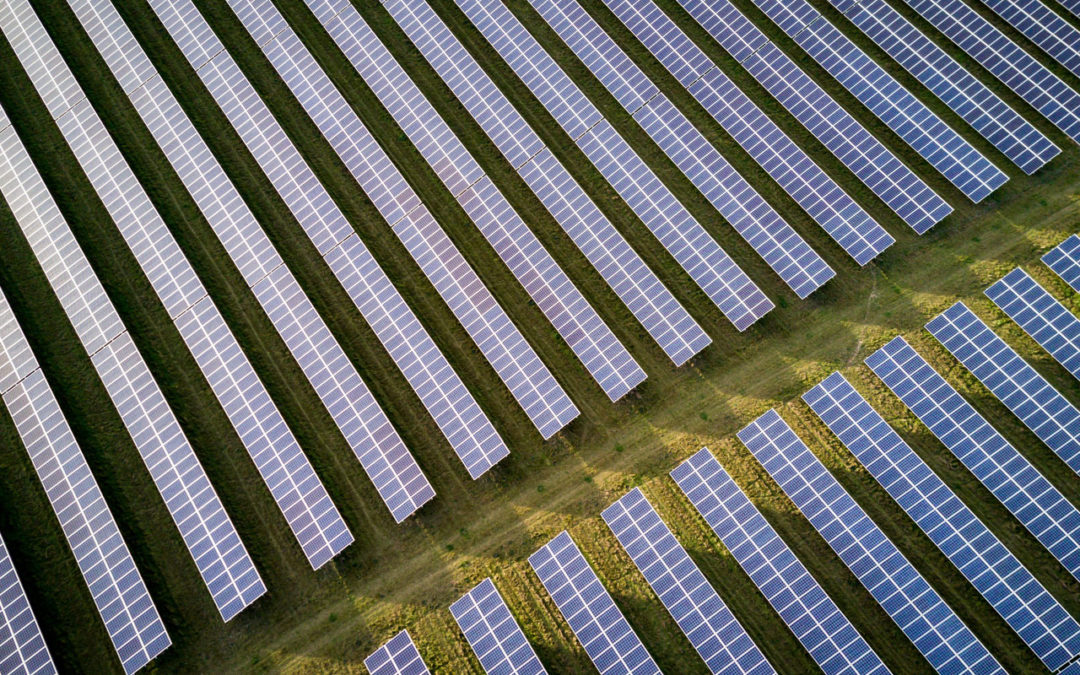
by Tyler Huebner | Dec 19, 2019 | Public Service Commission, Renewables, Solar, Utilities, Utility Scale
Today, the Public Service Commission of Wisconsin approved the Point Beach Solar Farm project!
Point Beach will be a 100 megawatt solar farm, and will supply electricity to WPPI Energy. WPPI is a wholesale energy provider for 41 municipal utilities in Wisconsin plus 10 more across Michigan and Iowa. The developer is NextEra Energy Resources, one of RENEW Wisconsin’s newest Business Members.
Almost three years ago, WPPI Energy made a splash by announcing the results of a request for renewable power proposals. At the time, wind energy was expected to be the winner of that competition. But this solar farm proposal was selected, foreshadowing how cost-effective solar power was becoming in Wisconsin.
Since then, other major power suppliers have followed WPPI Energy’s lead. In April 2019, the PSC approved the Badger Hollow and Two Creeks Solar Farms. Along with the 49.9 megawatt Richland County Solar Farms which was approved at the County level, these projects marked the first utility-scale solar approvals in Wisconsin.
This Point Beach Solar Farm will be placed on ground right around the existing Point Beach Nuclear Energy plant. It will also be located next to the Two Creeks Solar Farm now in construction, with the two projects combining to provide 249 megawatts of solar capacity in Manitowoc County.
With today’s PSC approval in hand, construction will begin next year and it should come online in 2021. It is expected to provide enough energy to serve more than 23,000 people.
Congratulations to NextEra Energy Resources and WPPI Energy on this project approval!
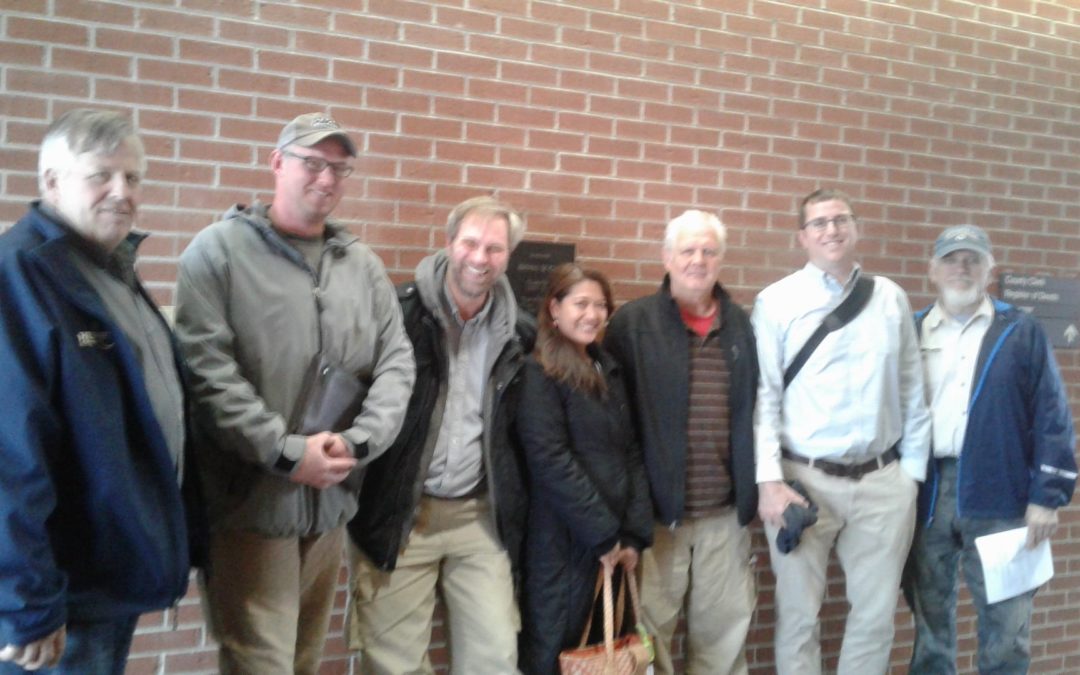
by Heather Allen | Apr 17, 2019 | Jobs, Local Government, Renewables, Solar, Utility Scale
On Wednesday, April 10, the Richland County Zoning and Land Information Committee unanimously voted to usher in a brand new, nearly 50 megawatt solar farm!
Located two miles north of the Wisconsin River on agricultural lands owned by three local families, the Richland County Solar Farm will sit on roughly 500 acres. With a capacity of 49.9 megawatts (MW), the project is expected to produce enough electricity to offset the consumption from more than 13,000 average Wisconsin homes.
This project’s approval kicked off a momentous week for solar energy in Wisconsin when, the very next day, the Public Service Commission of Wisconsin approved two additional solar farm projects totaling 450 megawatts. You can read about Badger Hollow and the Two Creeks solar farm approvals here.
Wisconsin’s current fleet of solar farms range from one to five MW in size. After the Richland County vote and the subsequent decisions at the PSC, it is clear that large-scale projects are coming to Wisconsin. Scaling up to a renewable energy economy will require investments in utility-scale wind and solar projects like the Richland County Solar Farm.
This is the first solar project of this size to be approved at the county level. Richland officials took their time to carefully review the project proposal. The developer, Savion Energy (formerly Tradewind Energy), held two community meetings in September and November in the Village of Lone Rock. The County Zoning and Land Information Committee also heard from the public at two meetings in November 2018 and the most recent meeting in April 2019.
At these meetings, residents from Richland County brought up the need for local jobs and the economic investment the farm would bring, the need for clean energy, their concerns about climate change, as well as concerns for future generations. Minutes before the final vote, local resident Bob Simpson expressed support for the project by highlighting his worries for his grandchildren and that at some point “we are going to run out of gas.” But there were other residents who expressed concern about potential issues related to glare, aesthetics and the use of agricultural land for solar.
Bearing in mind the concerns raised in the public meetings, the final conditions for the Richland County Solar Farm Conditional Use Permit project include the following developer obligations:
- Create a vegetative barrier between project lots and adjacent residences within 1000 feet of the project fence.
- Provide screening on State Route 130 (which runs through the project site) within 1000 feet of the project fence.
- Provide a detailed site plan including access and driveway permits.
- Provide a decommissioning plan and financial security for decommissioning.
Immediately after the meeting, I caught up with Marc Couey, Richland County Supervisor and member of the Zoning and Land Information Committee. I asked him about the Richland County Solar Farm and he said, “We are going to run out of power without using alternative energies. It’s the right thing to do.” I couldn’t agree more!

by Tyler Huebner | Apr 11, 2019 | Public Service Commission, Renewables, Solar, Utilities, Utility Scale
Today at its Open Meeting, the Wisconsin Public Service Commission approved five interrelated cases that will lead to a five-fold expansion of solar energy in Wisconsin.
The PSC approved:
- The Badger Hollow Solar Farm project in Iowa County, totaling 300 megawatts. Badger Hollow could become the largest solar electric plant in the Midwest when completed. In addition, the PSC approved a “tie line” that will deliver Badger Hollow’s output to a nearby substation, where it will be injected into the existing southwest Wisconsin grid.
- The Two Creeks Solar Project in Manitowoc County, totaling 150 megawatts. As with Badger Hollow, the PSC also approved a “tie line” that will deliver Two Creeks’ output to a nearby substation.
- Finally, the PSC approved an application from two Wisconsin utilities, Wisconsin Public Service based in Green Bay and Madison Gas & Electric, to acquire a total of 300 megawatts of this new solar capacity. The utilities will acquire the entire Two Creeks Solar Farm and a 150 MW share of the Badger Hollow Solar Farm. Wisconsin Public Service will acquire a total of 200 MW and Madison Gas & Electric will acquire 100 MW.
By RENEW Wisconsin’s estimates, the state of Wisconsin closed 2018 with about 103 megawatts of solar power, about 80% of that residing on homes and buildings, directly serving the customers who bought the solar arrays.
When completed, the 450 megawatts of solar would produce about 1.3% of Wisconsin’s annual electricity consumption, and supply electricity equivalent to the usage of about 116,500 Wisconsin homes. Both projects should be operational by mid-2021.
RENEW Wisconsin’s Executive Director, Tyler Huebner, said, “We are very happy to see the Public Service Commission approve these solar projects and find that it is cost-effective for two of our major utilities to own and operate these plants. It is a landmark day for solar energy in Wisconsin. Solar energy is a smart choice to meet the electricity needs of our citizens, businesses, and organizations, and without a state mandate to do so. With solar energy, we will produce homegrown, healthy energy right here in Wisconsin for years to come, and provide substantial economic benefits to the landowners and local governments who will host these projects.”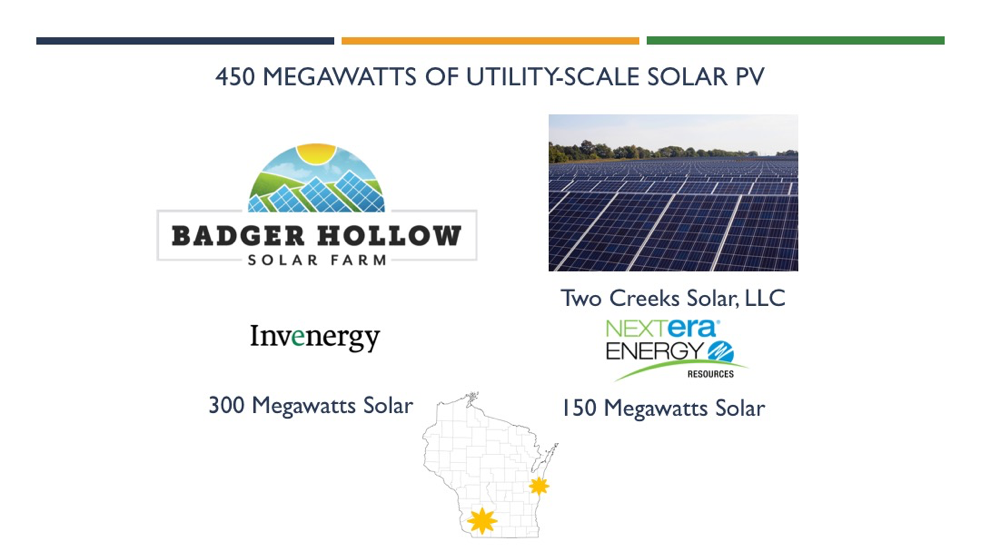
Today’s approvals build momentum for large-scale solar as a resource for power suppliers and utilities in Wisconsin.
- Three weeks ago, Dairyland Power Cooperative announced a commitment to purchase electricity from a 149 megawatt solar facility called Badger State Solar that would be located in Jefferson County. That project is subject to PSC approval as well.
- Just yesterday, April 10, the Richland County Board of Zoning gave final, and unanimous, approval to the 49.9 megawatt Richland County Solar Project developed by Savion Energy to be located in the Town of Buena Vista.
- In 2017, WPPI Energy announced it would purchase power from a 100 megawatt solar project near the Point Beach Nuclear Station. That project also will seek PSC approval in 2019.
Taken together, these five new solar projects account for approximately 749 megawatts of new solar power. If all are approved and built, they would supply 2.1% of Wisconsin’s annual electricity needs, and produce enough power to equal the annual usage of about 185,000 homes in Wisconsin. Beyond these projects, at least 4,000 megawatts of additional large-scale solar projects are being explored and developed in Wisconsin. We encourage you to learn more about large-scale solar energy, including our long list of questions and answers, at www.renewwisconsin.org/solarfarms.
About RENEW Wisconsin
RENEW Wisconsin is a nonprofit organization which promotes renewable energy in Wisconsin. We work on policies and programs that support solar power, wind power, biogas, local hydropower, geothermal energy, and electric vehicles in Wisconsin. More information is available on RENEW’s website: www.renewwisconsin.org.
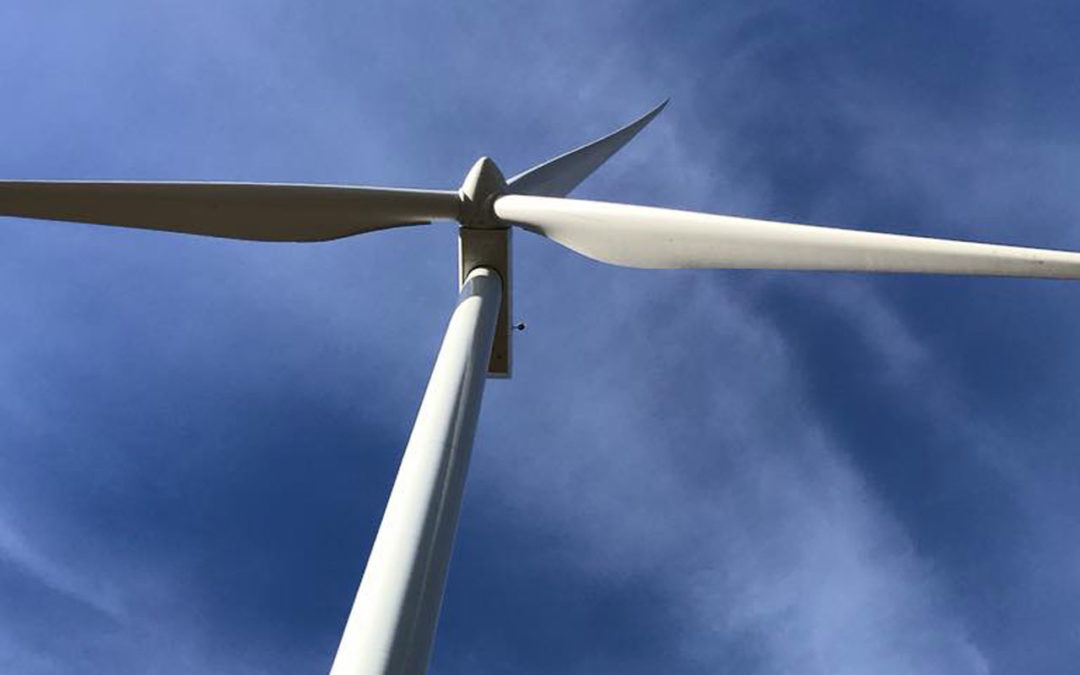
by Heather Allen | Feb 22, 2019 | Renewables, Utility Scale, Wind
After a prolonged absence from Wisconsin, wind developers are starting to come back to the Badger State with a desire to build projects. EDF Renewables, a nationally prominent renewable energy developer, has applied to construct and operate Green County’s first wind farm near the Illinois border. Called the Sugar River Wind Farm, this 24-turbine project would, if approved, generate an amount of electricity equal to what 20,000 households typically consume.
The Green County Board of Supervisors will review EDF’s 236-page application, which was submitted in late January, and will likely make a decision on the 65-megawatt project in July.
To accommodate the turbines, EDF envisions leasing almost 6,000 acres of farmland in the Town of Jefferson from area property owners. Participating landowners expect to continue farming operations while the wind farm operates.
As with other wind projects, the Sugar River Wind Farm will have a significant impact on the local economy. According to the application, more than $550,000 will flow to local landowners and governments each year during the project’s operation. Of that total, Green County and the Town of Jefferson will reap a combined $250,000 annually in the form of utility local aids.
Jefferson Township’s annual tax revenue income could increase by nearly 40% over 2019 levels as a result of this project. The project will also support 70 to 100 temporary construction jobs and three to five operations jobs over the life of the project.
If approved, Sugar River would be the second major wind energy development in Wisconsin to advance after a protracted lull in wind development activity that lasted between 2011 and 2017. Between a hostile political environment and a glut of generating capacity, utility-scale wind development activity languished in Wisconsin. During the dry spell here, developers flocked to neighboring states to tap into one of the most cost-effective clean energy sources available to utilities. The door reopened slightly when Dairyland Power Cooperative agreed to purchase electricity generated from Quilt Block Wind Farm, which started operating in November 2017.
Local Businesses Benefit from Wind Farms
Located in Lafayette County, Quilt Block has been hailed as a success by community leaders from the Town of Seymour and the City of Darlington.
“The Quilt Block Wind Farm in Darlington is a great asset to the City of Darlington and to Lafayette County,” said Darlington Mayor Dave Breuning. “During the construction, the employees were great to work with and they were very supportive of the retail businesses in Darlington.”
Mayor Bruening noted that Quilt Block’s labor force drove Ford trucks and had their vehicles serviced at the local auto dealership. Employees patronized area grocery stores and gas stations, and took their printing work to the local print shop, he said. “And then the Quilt Block Wind Farm built the office and garage in the Darlington business park. What a great addition to the City!”
More Efficient Wind Farms Lead to New Wind Proposals
Wind projects have become increasingly productive, as turbines are designed to be taller with longer blades to capture winds higher up in the sky that blow at faster speeds. “There’s an old physics equation that says when you can double the speed of the wind you are catching, the power that you’ll produce goes up eightfold,” Tyler Huebner, Executive Director of RENEW Wisconsin. “It’s a cubed relationship.” As the technology improves and wind farms become more cost-competitive, developers are working again in Wisconsin and coming forward with new proposals.
Wind Regulations and Project Review Timeline
When it took effect in 2012, Wis. Admin. Code § PSC 128 established the formal process that all local governments must abide by when reviewing permit applications for wind farms under 100 MW. The rule also set standards that local governments may apply to the placement of wind turbines as well as their construction and operation. Local governments have the option of adopting, for example, setback distances that are less stringent than the baseline standards in PSC 128. However, they may not impose standards that are more stringent than those specified in that rule. Wind energy projects in excess of 100 MW are reviewed by the Public Service Commission.
Green County has 90 days from the date of the application (Jan 30, 2019) to adopt a wind energy ordinance and an additional 90 days to review and approve the proposed project. At its March 12, 2019, meeting Green County Board of Supervisors will consider a resolution to adopt a wind ordinance. Wind energy projects that aren’t approved by the County within the two consecutive 90 day periods after an application is submitted are automatically approved.
How Can I Support Wind Development in Green County and Wisconsin?
Green County residents can send an email to the Green County Board of Supervisors. Their contact information is available here.
Learn more about wind. A report titled “Wind Turbines and Health” was recently issued by three organizations: the Environmental Health Sciences Research Center (which exists within the University of Iowa College of Public Health), Iowa Policy Project, and Iowa Environmental Council. The report summarizes the results of the most rigorous research available on the benefits and risks related to wind power.
Join RENEW’s information session about wind power on March 25, 2019, at 5 pm at the Monroe, WI Super 8 Motel. Enjoy refreshments and hear from the Mayor of Darlington and his colleagues talk about their experience in Lafayette County with the Quilt Block Wind Farm.
*This blog post was written by Heather Allen with contributions from Michael Vickerman.
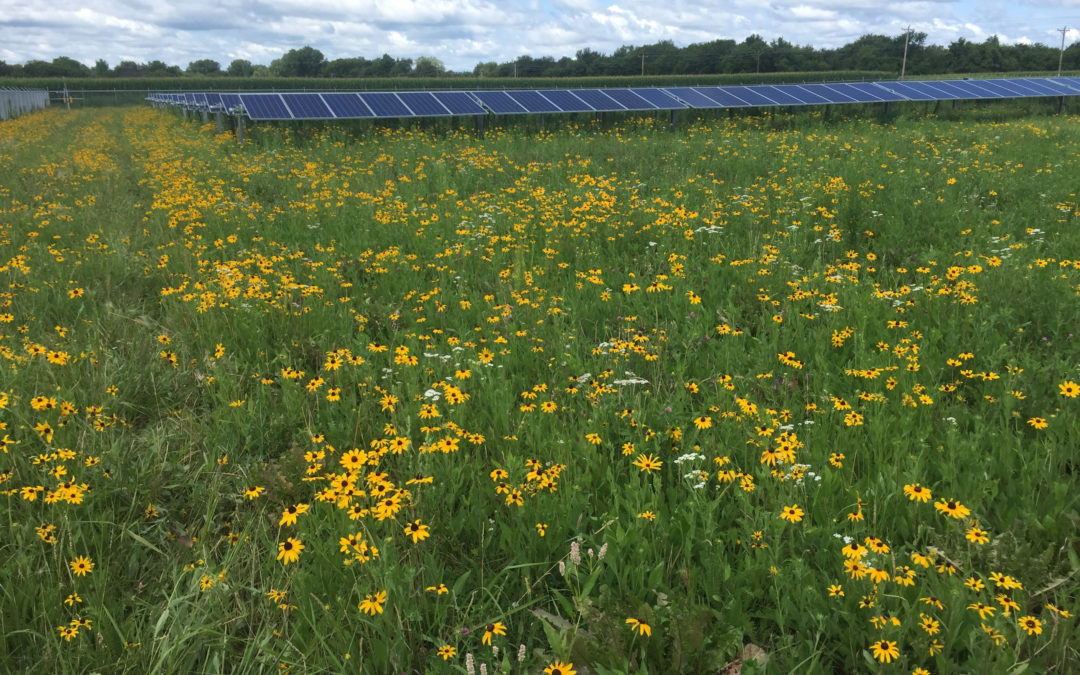
by Michael Vickerman | Nov 13, 2018 | Solar, Utility Scale
UPDATE: On Wednesday, April 10, 2019, the Richland County Zoning and Land Information Committee unanimously approved this project!
READ MORE.
Solar farm proposals continue to spring up like mushrooms across western Wisconsin. In the last month, Tradewind Energy, a solar and wind energy developer headquartered in Kansas, submitted plans to build a 50 megawatt (MW) solar farm in Richland County near the Village of Lone Rock.
Tradewind’s project would spread across 500 acres of farmland north of U.S. Highway 14 in the Town of Buena Vista. If approved, this project will generate on average about 100,000 megawatt-hours (MWH) of electricity a year, enough electricity supply for more than 13,000 Wisconsin households.
Similar to the Badger Hollow Solar Farm proposed in Iowa County, the Richland County solar farm would deploy long rows of panels mounted on single-axis trackers. Unlike Badger Hollow, Tradewind plans to purchase the participating properties outright instead of entering into a long-term lease with the two landowners for the use of that land. In addition, Tradewind’s permitting path is different, because at 50 MW, the Richland County solar farm is not large enough to preempt local zoning ordinances. It will be the Richland County Zoning Committee and not the Public Service Commission of Wisconsin that will review proposed solar farm, and decide whether or not to issue a Conditional Use Permit. The project site lies within a district zoned for general agriculture and forestry.
Heather Allen and I drove to Richland Center on November 5th to attend the permit hearing and communicate RENEW’s strong support for Tradewind’s proposal. About 25 people filled the meeting room. In attendance were members of the project development team, the owners of the farmland to be purchased, more than a dozen neighboring residents, and several people living elsewhere in Richland County.
The neighbors in attendance communicated their concerns about the proposal. One neighbor raised the issue of glare and glint that might be experienced by those living in proximity to the project area. Because the project site is near a small airport serving Sauk and Richland counties, Tradewind contracted with a consulting firm to determine whether solar glint could interfere with air traffic flying into and out from the airport. The consultant concluded that the solar farm would not pose problems for pilots using the Tri-County airport near Lone Rock.
So long as solar arrays are oriented so that they could never send glare into the control tower, they can be located at or near airports. A 2014 fact sheet prepared by Meister Consultants under a U.S. Dept. of Energy grant award notes that there are 30 airport solar PV installations operating in 15 states; the numbers are certainly higher today. One of the newest airport solar projects now operating is at Appleton International Airport, where Green Bay-based Eland Electric built a 230 kW parking canopy that supplies electricity to both the terminal and to the electric vehicles parked at the charging stations.
Another issue raised by neighbors relates to the decommissioning of the project at the end of its operating life. With solar and wind projects, the permitting authority will require the developer to post a bond sufficient to cover the cost of removing the arrays as well as restoring the land to its former condition. Host jurisdictions generally don’t struggle with this issue when the facility is owned by utility or a public body. However, in cases where the proposed facility would be owned by an independent power producer, especially one headquartered in a different state or country, there is often a concern that should the company run into financial difficulties or go bankrupt, the bond could disappear or become unavailable to the host jurisdiction. As explained by company representatives at the hearing, the bond that is posted would effectively become the property of the County, off-limits to Tradewind and all other entities that acquire an interest in the array over its operating life. This arrangement protects Richland County and ensures that the solar farm will be properly decommissioned.
At the conclusion of the hearing, the Zoning Committee decided to table discussion on the Conditional Use Permit and take the matter up again at its November 19th meeting, which will begin at 3:00 PM. In all likelihood, the committee will vote on the Conditional Use Permit at that meeting. Prior to the Zoning Committee meeting, Tradewind will hold a community information meeting on Thursday, November 15th, at the Lone Rock Community Hall, starting at 5:30 PM. If you live in Richland County, mark your calendars for these meetings. Richland County residents can also call or email to the County Board of Supervisors Zoning Committee in support of the project.
Please reach out to us at RENEW if you want to become a clean energy champion in your community!






